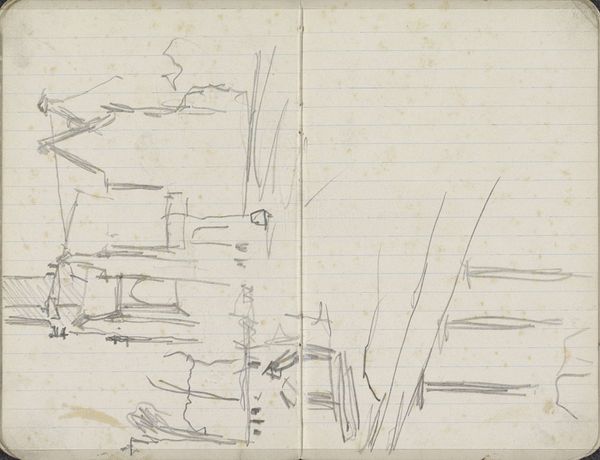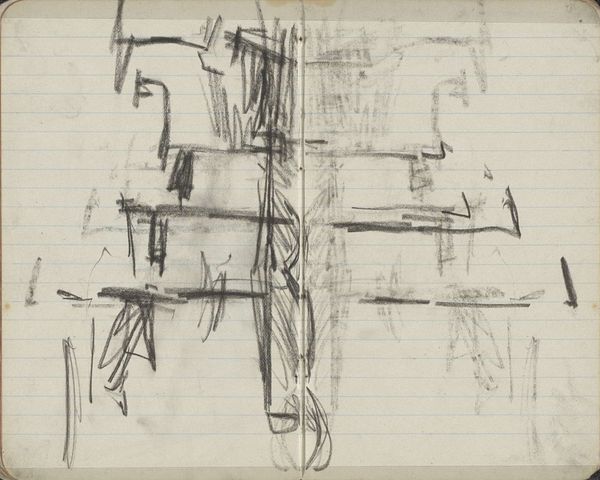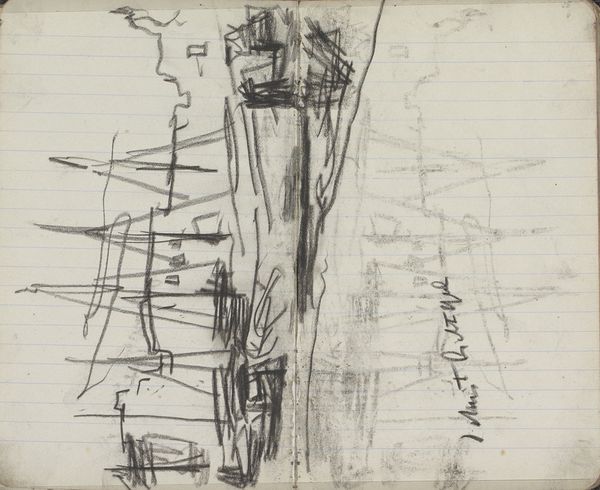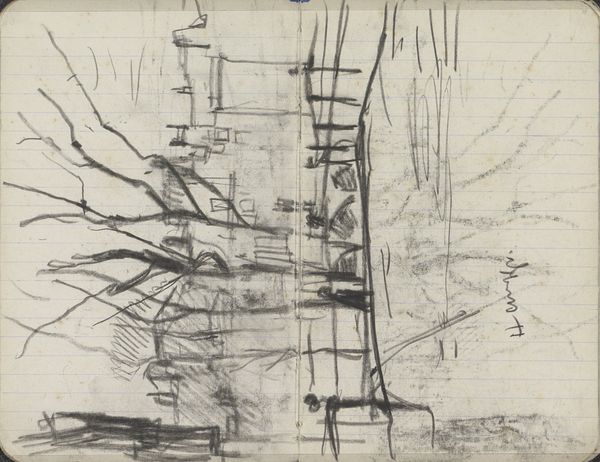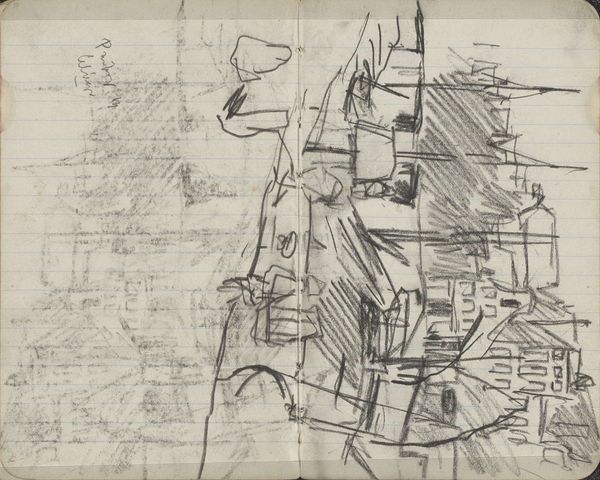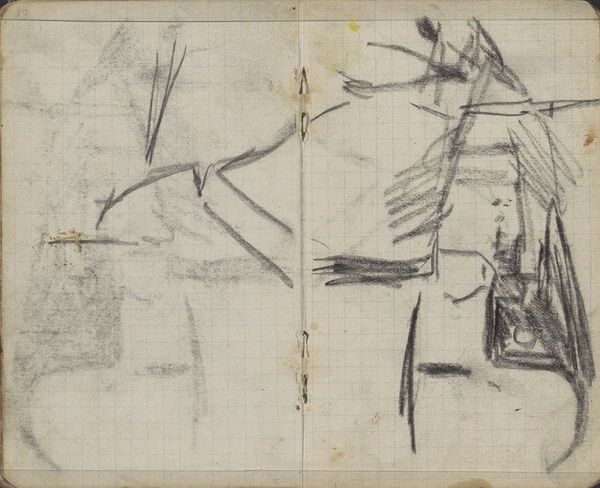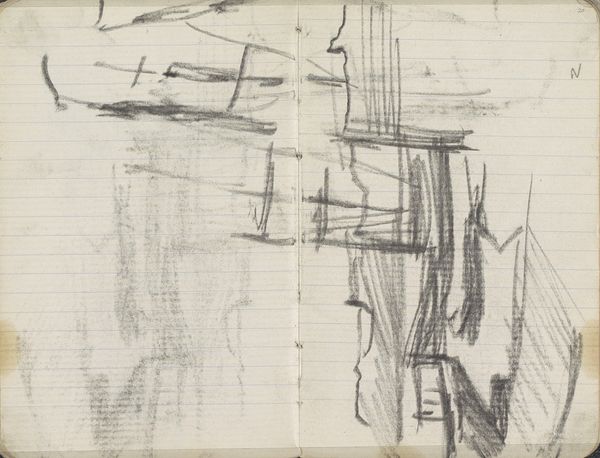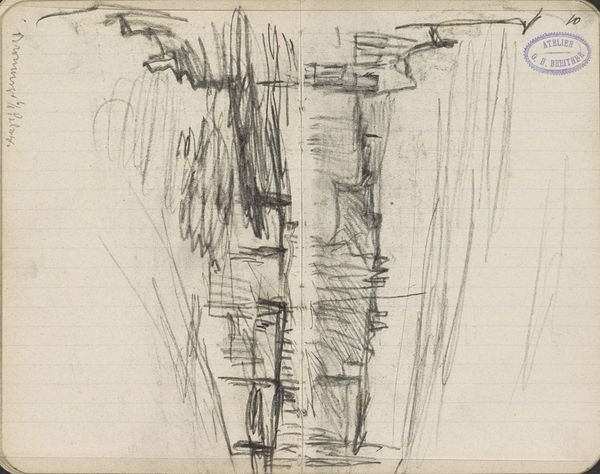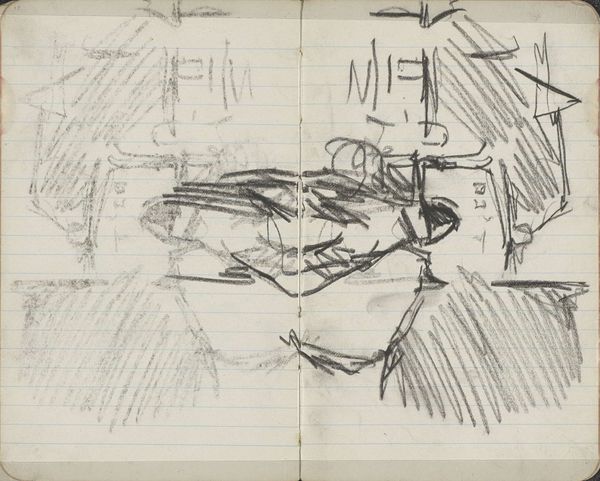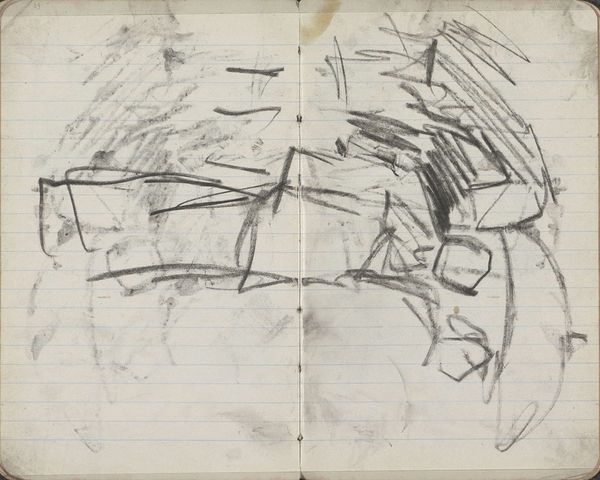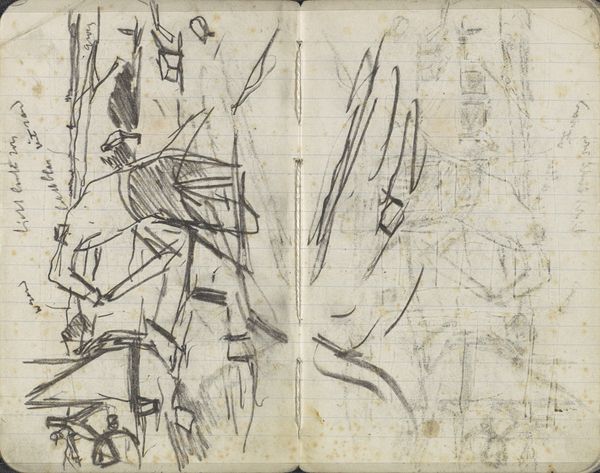
Copyright: Rijks Museum: Open Domain
Curator: What a wonderfully raw energy captured in this sketchbook page, "Gezicht in Amsterdam" or "View of Amsterdam." Breitner created this pencil drawing sometime between 1893 and 1898. Editor: The immediate impression is one of transience, almost a frantic attempt to capture a fleeting moment. The stark contrast between the roughly shaded areas and the sparse, almost scribbled lines, it feels unfinished but deeply evocative. Curator: It feels unfinished because it is, a glimpse into Breitner’s artistic process. We see not just a view of Amsterdam, but also Breitner’s interaction with the city, its working-class life that often went unacknowledged at the time. His Impressionistic style really highlights this focus. It’s about immediacy. Editor: I agree. The pencil, a humble medium, further amplifies this feeling of immediacy. There's something almost architectural here; the strong vertical lines seem to represent buildings, or perhaps canals—cornerstones of Amsterdam's identity. They give a structure, almost a sense of permanence, despite the hurried sketch. It is almost like seeing how people carve their existence. Curator: Right, but Breitner’s choice of Amsterdam isn’t random. As a rapidly growing, industrializing city, Amsterdam was also struggling with inequality and social tensions. Capturing this on what looks like a page torn from a personal sketchbook shows Breitner wasn't an outsider looking in; his intention was not a distanced interpretation but one involved in the city's progression, and maybe problems. Editor: That immediacy has lingered throughout history. Look at similar compositions used by artists documenting conflict zones. The sketchbook aesthetic lends itself to an idea of truth and reporting, making a point to document. A potent symbol for direct access to experiences. Curator: Absolutely, by capturing this everyday scene, Breitner elevates the common and demands us to acknowledge those who were often ignored. It challenges the norms that society creates around class. Editor: A brief sketch, but like you said, rich with socio-political implications even to this day. Curator: Exactly. It's why Breitner’s work still feels incredibly pertinent and urgent.
Comments
No comments
Be the first to comment and join the conversation on the ultimate creative platform.


